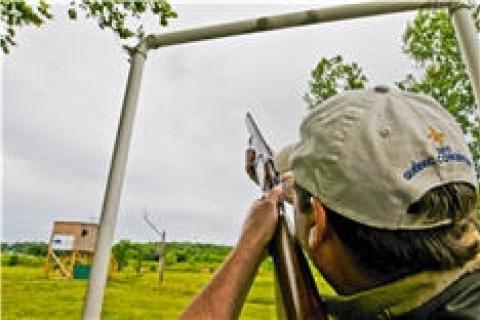
Focus on fundamentals this summer
Article by Chris Jennings
The reality of waterfowl hunting is that everyone misses. Being able to overcome a miss involves confidence and a fundamental understanding of each shot. There are a variety of shooting techniques to study, but remaining true to shotgunning basics is a time-tested approach for improving your skills.
"The fundamentals of shooting are very basic," explains Terry Hetrick, a National Skeet Shooting Association certified instructor and personal shooting instructor at the Tennessee Sporting Clays Complex. "It's like most things, practice is the best way to improve. Even when dealing with advanced shooters who are having problems with targets, I start with simple steps."
After 40 years in competitive shooting and winning numerous state and national titles, Hetrick continues to stress shotgunning basics to his students.
"My first lesson to everyone is to not shoot like I play golf. I am invited to play golf twice a year, and I get my clubs out of the basement without touching them and go play. That's no way to approach anything," he says. "There are facilities much like [the Tennessee Sporting Clays Complex] all over the country, and I recommend coming out to the range, if for nothing else than to make sure your equipment is working properly. This will get you tuned up for the hunting season, and you can do it year-round."
Keep Your Eyes on the Prize
Seeing a target is the first step to hitting it, and Hetrick focuses on teaching people how to use their vision effectively.
"The gun is merely a tool, and your eyes are the greatest asset you have," he says. "The first lesson I work on with shooters is learning how well you are actually seeing the target."
When waterfowl hunting, many times this means seeing the bird—sometimes many birds—as well as the direction they are traveling, their speed and the angle of descent or ascent. While Hetrick understands that a mallard drake decoying in a snowstorm makes for a much different shot than a left-to-right crossing target on a sporting clays range, it's still all about target acquisition. Making visual contact and maintaining contact is crucial for shooters.
"I have many people who are caught looking at the end of gun. If you look at the end of the gun, you can't see the target. That's like trying to drive a car, but staring at the steering wheel," Hetrick says. "Your instincts are what make you a great shot, and applying those instincts on a good visual target is the first step to hitting it."
Need Somewhere to Shoot?
The National Shooting Sports Foundation (NSSF) has created a state-by-state digital directory of shooting ranges in the United States. Customize your search by selecting the type of firearm, state and zip code to find shooting opportunities near you. For more information or to find a range in your area, visit wheretoshoot.org/ This app is also available for iPhone users.
Follow Through the Target
While target acquisition is an important first step to a successful shot, Hetrick says many shooters struggle with maintaining a fluid swing while tracking the target in flight. "Shooters bring the gun up and shoot, then immediately pull the gun away to look at the target. The reason to keep your head down on the gun is because a shotgun doesn't have a rear sight. The rear sight is your eye."
Similar to a rifle, moving the rear sight—even slightly—changes the gun's aiming point. This is a common mistake made by shooters on close decoying shots. As the bird fills the shooter's field of vision, many shooters lift their head in anticipation of seeing the bird fall, which pushes the gun—and the shot—off target.
Watch Your Gun Speed
Blue-winged teal buzzing the decoys and a mallard circling overhead are obviously moving at two very different speeds. Being able to adjust the speed of your gun to the target is another essential skill Hetrick stresses to his students.
"Much like trying to take a picture of a duck in flight, you have to keep the camera moving at the same speed as the bird to keep it in focus," he says. "We fail to realize the importance of keeping your gun moving at the same speed as the target and, far more important, getting the exact lead."
Going to the range and focusing on these three fundamentals—visualizing the target, following through the shot and gun speed—will provide the essential skills need to consistently shoot well. Hetrick says that although 60 percent of his students are waterfowl hunters, there isn't a specific sporting clays target he focuses on with students.
"There are so many different shots waterfowl hunters face in the field, it's hard to mimic them on the range," Hetrick says. "It's better to diversify your shots, and once you get that target focus and establish the basic fundamentals, your instincts will do the rest."
Originally published on Ducks Unlimited
Published here with permission from Ducks Unlimited
- 3500 views

